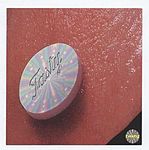December 2017 Melbourne car attack
2010s in Melbourne2017 crimes in Australia2017 road incidentsAttacks in 2017Crime in Melbourne ... and 5 more
December 2017 crimes in OceaniaDecember 2017 events in AustraliaRoad incidents in AustraliaUse Australian English from December 2017Vehicular rampage in Oceania

On 21 December 2017, at 4:41 pm AEDT, a driver rammed pedestrians with his car at the corner of Flinders Street and Elizabeth Street in Melbourne, Victoria, Australia, killing one person and injuring seventeen others, including himself. The sole fatality, an elderly man, died eight days after the attack.
Excerpt from the Wikipedia article December 2017 Melbourne car attack (License: CC BY-SA 3.0, Authors, Images).December 2017 Melbourne car attack
Flinders Street, Melbourne Melbourne
Geographical coordinates (GPS) Address Nearby Places Show on map
Geographical coordinates (GPS)
| Latitude | Longitude |
|---|---|
| N -37.8182 ° | E 144.965 ° |
Address
Flinders Street 207-361
3000 Melbourne, Melbourne
Victoria, Australia
Open on Google Maps










